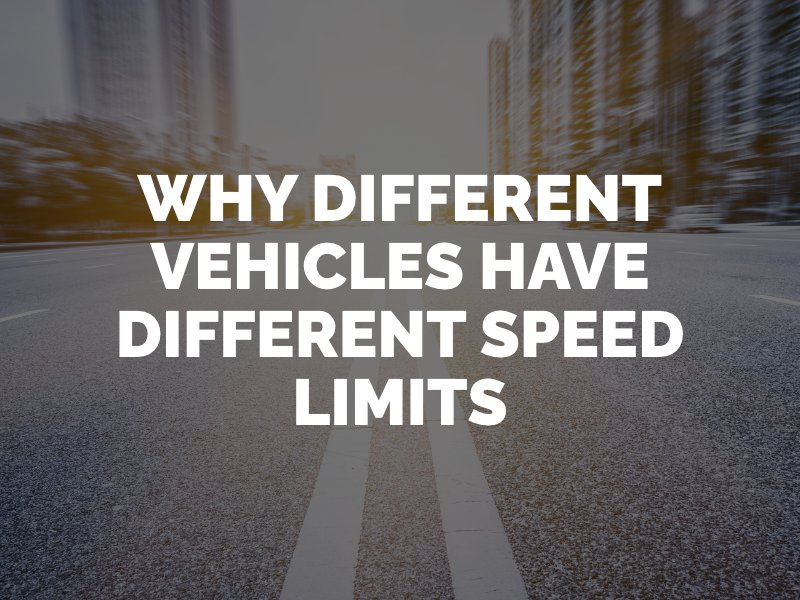Why is the Highway Speed Limit Different Depending on Vehicle Type?
There are several reasons why the highway speed limit differs depending on the type of vehicle being driven.

Safety Considerations
Safety is one of the most important reasons the speed limit varies based on the vehicle type. Different vehicles have different capabilities and handling characteristics that affect their ability to travel at high speeds safely. For example, a car may be able to safely travel at a higher speed than a semi-truck or a bus. A vehicle with a higher center of gravity or a larger mass may be more prone to tipping over or losing control at high speeds. Therefore, to ensure the safety of all road users, speed limits are set based on the specific characteristics of each vehicle type.
Road Conditions
Another reason is vehicles have different capabilities when it comes to maneuvering and stopping on wet or slippery roads. For example, a sports car with high-performance tires may be able to safely travel at high speeds on dry roads but could be more prone to hydroplaning on wet roads. Similarly, a semi-truck or a bus may require a longer distance to stop due to their size and weight, making them more susceptible to accidents in inclement weather. Therefore, speed limits are adjusted based on the road conditions to ensure the safety of all road users.
Environmental Considerations
Finally, the speed at which vehicles travel can significantly impact the environment. Vehicles that travel at higher speeds consume more fuel, resulting in increased greenhouse gas emissions and other pollutants. Therefore, speed limits can also be set based on environmental considerations to reduce the impact of vehicle emissions on the environment.
The Dangers of Vehicles Traveling Above their Speed Limits
There are many dangers associated with vehicles traveling above their speed limits, including:
- Increased risk of car accidents: Speeding drivers have less time to react to unexpected events and have a longer stopping distance. This can result in a higher risk of accidents, leading to property damage, injuries, and fatalities.
- Reduced ability to control the vehicle: When drivers exceed the speed limit, they have less control over their vehicle. This can lead to loss of traction, increased risk of skidding, and reduced handling ability, making it harder to avoid collisions or obstacles.
- Higher likelihood of serious injuries: High-speed crashes are more likely to result in severe injuries or fatalities than ones at lower speeds.
- Reduced reaction time: When a vehicle travels faster than the speed limit, the less time the driver has to react to hazards.
Can the Speed of a Vehicle Be Determined After a Crash?
Accident investigators can often determine the speed of a vehicle involved in a crash. Several methods can be used:
- Skid marks: If a vehicle leaves skid marks on the road before impact, investigators can measure the length of the skid marks to estimate the vehicle’s speed.
- Debris pattern: The pattern of debris left at the scene of the accident can provide clues about the speed and direction of the vehicles involved.
- Damage analysis: The extent and location of damage to the vehicles can be used to estimate their speed at the time of impact.
- Witness statements: Eyewitnesses to the accident can provide valuable information about the speed of the vehicles involved.
- Event data recorder (EDR): Commercial and many modern vehicles are equipped with an EDR, which records data such as speed, acceleration, and braking.
The accuracy of these estimates can vary depending on the circumstances of the accident. Other factors, such as road conditions, weather, and driver behavior, can also affect the outcome of an accident.
